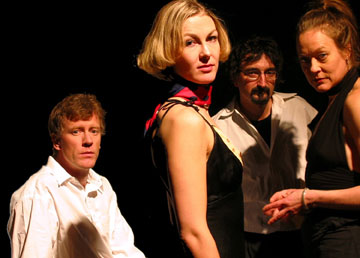Browse "Places"
-
Article
Okak Archaeological Sites
The Okak Archaeological Sites in northern Labrador represent a microcosm of more than 5000 years of Prehistory of that region.
"https://development.thecanadianencyclopedia.ca/images/tce_placeholder.jpg?v=e9dca980c9bdb3aa11e832e7ea94f5d9" // resources/views/front/categories/view.blade.php
https://development.thecanadianencyclopedia.ca/images/tce_placeholder.jpg?v=e9dca980c9bdb3aa11e832e7ea94f5d9
-
Article
Okanagan Lake
Okanagan Lake is located in the southern interior of British Columbia and is the largest lake in the Okanagan Valley. Approximately 6,188 km2 of land drain into the lake, which has a total surface area of 351 km2. The lake is long and thin, measuring 120 km in length and ranging between 3 and 5 km in width. The depth of the lake is highly variable, with a mean depth of 76 m and a maximum depth of 230 m. Okanagan Lake is heavily used for recreation and is believed by some to be the home of the mythical Ogopogo creature.
"https://d2ttikhf7xbzbs.cloudfront.net/media/media/7683aa12-4190-4aca-ab28-5f9862bdad24.jpg" // resources/views/front/categories/view.blade.php
https://d2ttikhf7xbzbs.cloudfront.net/media/media/7683aa12-4190-4aca-ab28-5f9862bdad24.jpg
-
Article
Okanagan Valley
The Okanagan Valley is in south-central British Columbia, extending about 200 km north from the American border.
"https://d2ttikhf7xbzbs.cloudfront.net/media/media/4c55a3e5-810a-4ea3-b81d-24da77ff3b7c.jpg" // resources/views/front/categories/view.blade.php
https://d2ttikhf7xbzbs.cloudfront.net/media/media/4c55a3e5-810a-4ea3-b81d-24da77ff3b7c.jpg
-
Article
Okotoks
Okotoks, Alberta, incorporated as a town in 1904, population 30,214 (2021 census), 28,833 (2016 census). The town of Okotoks is located 20 km south of Calgary.
"https://d2ttikhf7xbzbs.cloudfront.net/media/media/3b6d7b08-6a6e-43bd-adc4-3966fa1a210c.jpg" // resources/views/front/categories/view.blade.php
https://d2ttikhf7xbzbs.cloudfront.net/media/media/3b6d7b08-6a6e-43bd-adc4-3966fa1a210c.jpg
-
Article
Old Crow
Muskrat trapping provided a major source of income for the Vuntut Gwitchin from the early 1900s. They were a nomadic people, living seasonally, strictly off the land and animals.
"https://d2ttikhf7xbzbs.cloudfront.net/media/media/1c3c3ccd-a459-49b0-a70d-f148ef5d1716.jpg" // resources/views/front/categories/view.blade.php
https://d2ttikhf7xbzbs.cloudfront.net/media/media/1c3c3ccd-a459-49b0-a70d-f148ef5d1716.jpg
-
Article
Old Crow Basin
Old Crow Basin is an important geographic feature in the natural history and human history of Canada
"https://d2ttikhf7xbzbs.cloudfront.net/media/media/3372115f-2e5f-492c-a1d9-de73d4668939.jpg" // resources/views/front/categories/view.blade.php
https://d2ttikhf7xbzbs.cloudfront.net/media/media/3372115f-2e5f-492c-a1d9-de73d4668939.jpg
-
Article
Old Crow Plain
The vegetation is of the tundra type, with outliers of the boreal spruce forest; willow thickets line the course of the Old Crow River.
"https://d2ttikhf7xbzbs.cloudfront.net/media/media/3372115f-2e5f-492c-a1d9-de73d4668939.jpg" // resources/views/front/categories/view.blade.php
https://d2ttikhf7xbzbs.cloudfront.net/media/media/3372115f-2e5f-492c-a1d9-de73d4668939.jpg
-
Article
Old Log Church Museum
The Old Log Church Museum is an Anglican church, built in 1900 in Whitehorse, Yukon Territory.
"https://d2ttikhf7xbzbs.cloudfront.net/media/media/bf260975-3834-45d5-82ea-1e34363b2b26.jpg" // resources/views/front/categories/view.blade.php
https://d2ttikhf7xbzbs.cloudfront.net/media/media/bf260975-3834-45d5-82ea-1e34363b2b26.jpg
-
Article
Old Meeting House and Barrington Woolen Mill
The Barrington Woolen Mill is a typical late-19th-century mill. Established in 1882, the mill operated up to 1962. It is perhaps most notable for its excellent collection of looms, spinning jennies, carding machines and other early mill equipment and machinery.
"https://d2ttikhf7xbzbs.cloudfront.net/media/media/b025b87d-c65d-40cc-af2a-c487a30e8c2c.jpg" // resources/views/front/categories/view.blade.php
https://d2ttikhf7xbzbs.cloudfront.net/media/media/b025b87d-c65d-40cc-af2a-c487a30e8c2c.jpg
-
Article
Old Montreal
Old Montreal is the historic district of the city of Montreal, located in the south-central part of Montreal Island and bounded by the St. Lawrence River to the south, Saint-Antoine Street to the north, McGill Street to the west and Saint-Hubert Street to the east. In the second half of the 20th century, this area came under pressure from urban change, as business and port activity shifted elsewhere, depriving Old Montreal of its historic roles. But in the 1960s, a long process began that completely transformed it into a heritage district (it was at this time that the name Old Montreal came into common use). The designation of the Arrondissement historique de Montréal by the Quebec government in 1964 marked an important step in this transformation. With massive investments from the three levels of government, as well as from businesses and individuals, a lengthy rehabilitation effort began. Nearly 60 years later, visitors can now follow the traces of Montreal’s history back to pre-colonial times, and the changes that the city has undergone since the first European settlers arrived in 1642.
"https://d2ttikhf7xbzbs.cloudfront.net/media/media/8d2c56dc-ee18-46a6-97c9-5270de290831.JPG" // resources/views/front/categories/view.blade.php
https://d2ttikhf7xbzbs.cloudfront.net/media/media/8d2c56dc-ee18-46a6-97c9-5270de290831.JPG -
Article
Olds
Olds, Alta, incorporated as a town in 1905, population 8235 (2011c), 7253 (2006c). The Town of Olds is situated in a transition zone between prairie grassland and partially wooded parkland 89 km north of Calgary.
"https://development.thecanadianencyclopedia.ca/images/tce_placeholder.jpg?v=e9dca980c9bdb3aa11e832e7ea94f5d9" // resources/views/front/categories/view.blade.php
https://development.thecanadianencyclopedia.ca/images/tce_placeholder.jpg?v=e9dca980c9bdb3aa11e832e7ea94f5d9
-
Article
O'Leary
O'Leary, PEI, incorporated as a village in 1951 and as a community in 1983, population 812 (2011c), 861 (2006c).The Community of O'Leary is situated in Prince County 59 km northwest of SUMMERSIDE. It came into being after 1874,
"https://development.thecanadianencyclopedia.ca/images/tce_placeholder.jpg?v=e9dca980c9bdb3aa11e832e7ea94f5d9" // resources/views/front/categories/view.blade.php
https://development.thecanadianencyclopedia.ca/images/tce_placeholder.jpg?v=e9dca980c9bdb3aa11e832e7ea94f5d9
-
Article
Oliver
Oliver, BC, incorporated as a village in 1945 and as a town in 1991, population 4824 (2011c), 4395 (2006c). The Town of Oliver is located in the OKANAGAN VALLEY, 27 km south of Penticton.
"https://development.thecanadianencyclopedia.ca/images/tce_placeholder.jpg?v=e9dca980c9bdb3aa11e832e7ea94f5d9" // resources/views/front/categories/view.blade.php
https://development.thecanadianencyclopedia.ca/images/tce_placeholder.jpg?v=e9dca980c9bdb3aa11e832e7ea94f5d9
-
Article
One Yellow Rabbit Performance Theatre
For its first six years, One Yellow Rabbit was run as a collective by founding members Gyllian Raby (its artistic director), Michael Green, Blake Brooker, Nigel Scott, Kirk Miles, Jan Stirling, George McFaul and Marianne Moroney.
"https://d2ttikhf7xbzbs.cloudfront.net/media/media/34830d23-e6a3-4146-b3c3-48841770d398.jpg" // resources/views/front/categories/view.blade.php
https://d2ttikhf7xbzbs.cloudfront.net/media/media/34830d23-e6a3-4146-b3c3-48841770d398.jpg
-
Article
Ontario
Ontario is a Canadian province bounded by Manitoba to the west, Hudson Bay to the north, Québec to the east, and New York, the Great Lakes, Michigan and Minnesota to the south. The province was founded on parts of the traditional territories of the Ojibwa, Odawa, Potawatomi, Algonquin, Mississauga, Haudenosaunee, Neutral, Wendat, Cree, Oji-Cree and Métis. The land is now governed by 46 treaties, including the Upper Canada, Williams and Robinson treaties, as well as Treaties 3, 5 and 9.. As of the 2021 census, Ontario had 14,223,942 residents, making it the most populous province or territory in Canada. Ontario was one of the founding members of Confederation, along with New Brunswick, Nova Scotia and Québec, in 1867. The capital city of Ontario is Toronto. Doug Ford is the province’s current premier, leading a majority Progressive Conservative government.
"https://d2ttikhf7xbzbs.cloudfront.net/media/media/dea1b6f4-4cd1-448c-b08b-41dd597ec05e.jpg" // resources/views/front/categories/view.blade.php
https://d2ttikhf7xbzbs.cloudfront.net/media/media/dea1b6f4-4cd1-448c-b08b-41dd597ec05e.jpg

